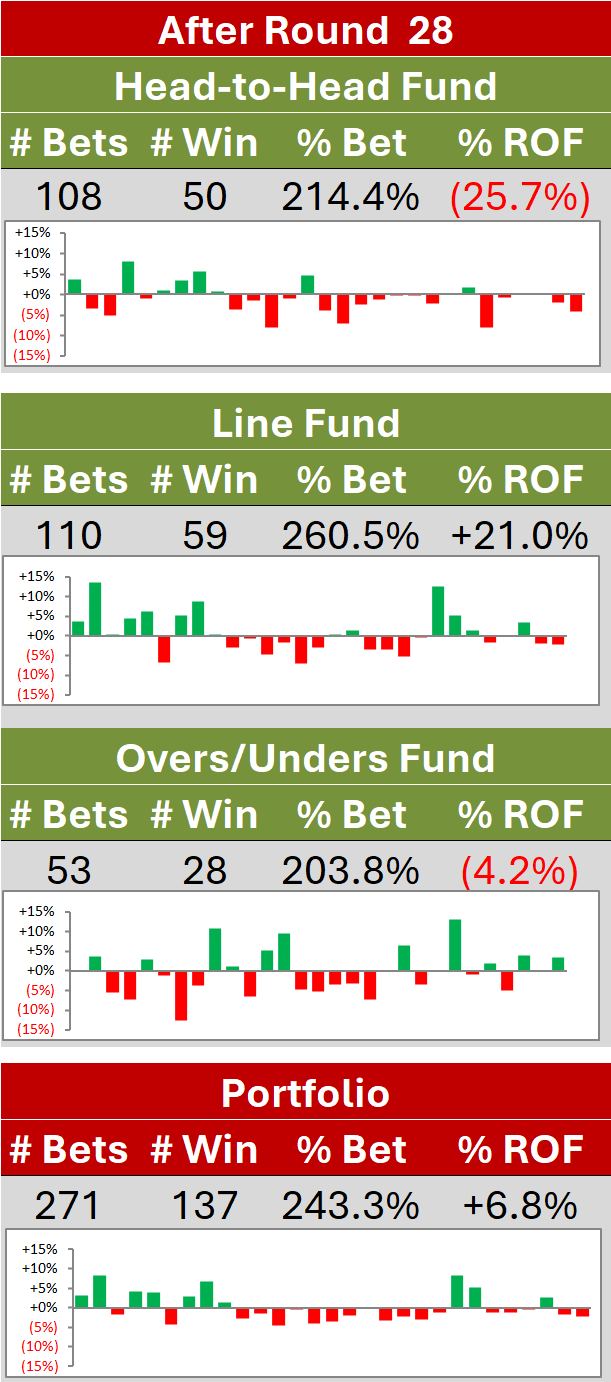MosHBODS ANALYSES
The heteroskedasticity or otherwise of game margins has been a common topic here on MoS (see, for example, this post from 2014 or this post from 2013). Generally, the evidence for heteroskedasticity has been found to be fairly weak, but such analyses and conclusions depend on:
the model used to provide forecasts
the variables analysed as being potentially associated with the residuals of that model (ie the differences between the actual and expected margins)
In this analysis, the MoSHBODS Team Rating System has been used to provide the expected margin data and expected totals in each contest, these latter variables the ones postulated as being potentially associated with margin prediction errors.
Because average scores and margins have varied over time, we need to perform this analysis on an era-by-era basis.
Firstly, let’s see if absolute margin errors tend to increase with the expected total score.
There is essentially no relationship between average absolute margin error and expected total score for MoSHBODS for any era. In other words, MoSHBODS’ margin forecasts are as likely to be, say, 30 points out for a game with an expected total of 150 as for a game with an expected total of 180.
We might, instead, postulate that absolute margin error tends to increase with the size of the expected margin.
There is no relationship between average absolute margin error and expected margin for MoSHBODS for any era. In other words, MoSHBODS’ margin forecasts are as likely to be, say, 30 points out for a game with an expected margin of 2 points as for a game with an expected margin of 50 points.
In interpreting these charts it's important to remember that any finding of heteroskedasticity is particular to the model used to define expected margins and is only with respect to the variables analysed. It might well be, for example, that the MoSHBODS model has some feature or flaw that causes it to produce margin estimates that are or are not heteroskedastic either generally or for particular eras - we can't assert that V/AFL game margins are, inherently, heteroskedastic based on any such analysis.
ANALYSIS USING AUS SPORTS BETTING DATA
One obvious way of assessing how large a role our choice of model (here, MoSHBODS) has played in the finding of no relationship between actual margin forecast errors and predicted totals or predicted margins is to use a different model.
For this purpose we’ll use the bookmakers’ model that informs the data from here. We’ll focus on the closing Total and Line, adjusting it as necessary when the prices for under/over or plus/minus are not equal.
Once more we find no strong relationship between forecast Total and absolute Margin errors.
Lastly, here we find the weakest of relationships between absolute Margin Errors and forecast Margins. Fitting a linear regression reveals an R-squared of just under 4% and an effect size that is small but non-trivial: for every 10 point increase in our forecast Margin there’s a 3.7 point increase in the expected absolute Margin Error.
So, if we were using these forecast Margins, we might want to adjust the mean average error or standard deviation we associated them (say, for the purposes of entering the Gaussian competition at Monash) depending on the absolute size of the Margin.

